TV show highlights some unusual but relevant items from the revolutionary past in successful bid to attract young viewers by enriching their knowledge of the struggle for freedom, Xu Fan reports.
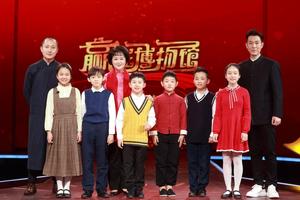 China Central Television hosts Ju Ping (fourth from left), Huo Xiaolei (right) and Huang Wei (left) with young volunteer guides in the show. (PHOTO PROVIDED TO CHINA DAILY)
China Central Television hosts Ju Ping (fourth from left), Huo Xiaolei (right) and Huang Wei (left) with young volunteer guides in the show. (PHOTO PROVIDED TO CHINA DAILY)
Situated in downtown Beijing, the Military Museum of the Chinese People's Revolution is like a treasure trove that has drawn numerous visitors to glimpse the country's military history.
Among the landmark complex's sizable collection, consisting of more than 180,000 objects, a German-made Mauser M1896 pistol is displayed in a conspicuous position.
Despite looking a bit old and obsolete with the outer coating fading, the firearm was once part of a pivotal moment of modern history. It was carried by Zhu De-one of China's greatest military leaders-during the Nanchang Uprising, the first major conflict led by the Communist Party to counter anti-communist purges by the Kuomintang, starting in the capital city of Jiangxi province on Aug 1, 1927.
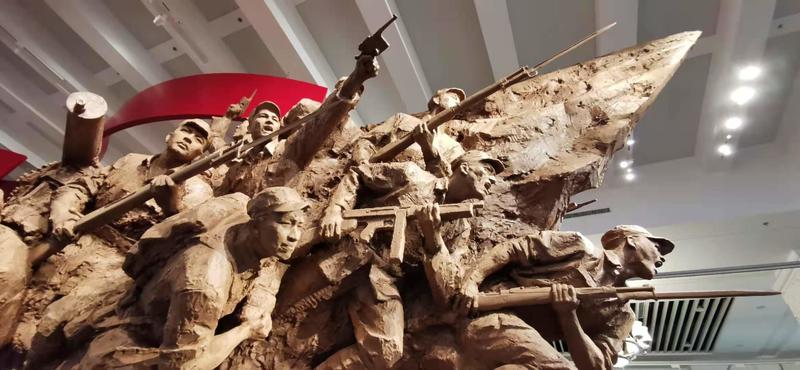 Images from Win at the Museum feature some of the most well-known museums with unique collections of revolutionary relics in China, such as the Military Museum of the Chinese People's Revolution in Beijing. (PHOTO PROVIDED TO CHINA DAILY)
Images from Win at the Museum feature some of the most well-known museums with unique collections of revolutionary relics in China, such as the Military Museum of the Chinese People's Revolution in Beijing. (PHOTO PROVIDED TO CHINA DAILY)
Alongside a bunch of valuable historical relics, the pistol and the legendary stories behind it are featured in 2021 Win at the Museum, a TV show recently aired on CCTV-14, the country's flagship broadcaster for children and teenagers.
First launched in 2018, the annual show aims to expand and enrich youngsters' knowledge about China's history and culture through a series of tours to some of the country's most well-known museums.
Unlike the past three episodes, which explore ancient civilization, the fourth season spanning nine episodes travels to 11 museums, most of which are located in the Party's previous revolutionary bases such as Jinggangshan and Yan'an respectively in Jiangxi, Shaanxi provinces, or cities where once significant meetings were held, like Zunyi in Guizhou province and Shanghai.
 The stage of the show, decorated with a revolutionary flair. (PHOTO PROVIDED TO CHINA DAILY)
The stage of the show, decorated with a revolutionary flair. (PHOTO PROVIDED TO CHINA DAILY)
To mark the 100th anniversary of the founding of the CPC, the latest season-which is now available on China Central Television's website-blends veteran guides' introductions, stories told by youngsters and close-up shots inside museums to look back on the turbulent era from the Party's founding in 1921 to the birth of the People's Republic of China in 1949.
Aside from Zhu De's pistol, a number of revolutionary relics are showcased in the show, including an important seal used by general He Long, and the first radio owned by the Red Army in 1930.
"Museums are unique places that take you back in history. The charm of history lies in the details, historical information and legendary stories behind each of the precious relics," says Si Xiaofeng, the chief director, adding that he wishes the show can raise youngsters' interest to better learn about China's modern history.
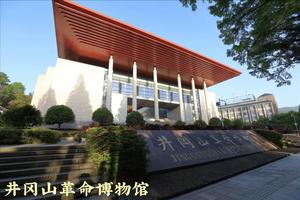 Images from Win at the Museum feature some of the most well-known museums with unique collections of revolutionary relics in China, such as this one in Jinggangshan in Jiangxi. (PHOTO PROVIDED TO CHINA DAILY)
Images from Win at the Museum feature some of the most well-known museums with unique collections of revolutionary relics in China, such as this one in Jinggangshan in Jiangxi. (PHOTO PROVIDED TO CHINA DAILY)
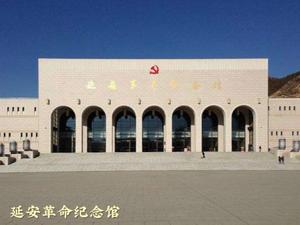 Images from Win at the Museum feature some of the most well-known museums with unique collections of revolutionary relics in China, such as this one in Yan'an, Shaanxi province. (PHOTO PROVIDED TO CHINA DAILY)
Images from Win at the Museum feature some of the most well-known museums with unique collections of revolutionary relics in China, such as this one in Yan'an, Shaanxi province. (PHOTO PROVIDED TO CHINA DAILY)
Depicting the show as "a red gift" for children, Si says the crew has also invited a special team of volunteer tour guides-aged between 7 and 16-recommended from all the 11 museums or selected from the previous three seasons.
A moment at which Si was most impressed was during the crew's visit to Yan'an Revolutionary Memorial Hall, also the residence of Mao Zedong and the workplace of the Central Committee of the CPC between 1935 and 1948.
Stumbling upon students from a primary school who were attending an art festival, Si was captivated by a child's emotional retelling of the heroic story of Zhang Side (1915-44), a veteran soldier who sacrificed his life to rescue a companion during a dwelling cave collapse.
Si says he was deeply moved as the scene denotes that the history has been remembered by the next generation, also the future hope of China.
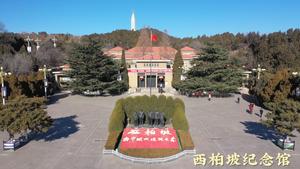 Images from Win at the Museum feature some of the most well-known museums with unique collections of revolutionary relics in China, such as this one in Xibaipo, Hebei province. (PHOTO PROVIDED TO CHINA DAILY)
Images from Win at the Museum feature some of the most well-known museums with unique collections of revolutionary relics in China, such as this one in Xibaipo, Hebei province. (PHOTO PROVIDED TO CHINA DAILY)
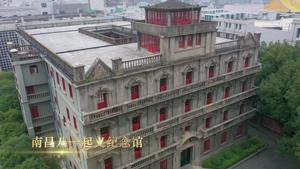 Images from Win at the Museum feature some of the most well-known museums with unique collections of revolutionary relics in China, such as this one in Nanchang, Jiangxi province. (PHOTO PROVIDED TO CHINA DAILY)
Images from Win at the Museum feature some of the most well-known museums with unique collections of revolutionary relics in China, such as this one in Nanchang, Jiangxi province. (PHOTO PROVIDED TO CHINA DAILY)
In order to appeal to more young audiences with an easygoing style, Si says the crew paid more attention to specially selected relics with interesting stories.
For instance, in the last episode on the National Museum of China, a veteran guide introduces a less-noticed detail of the national flag raised in Tian'anmen Square during the country's 1949 founding ceremony. One angle of the biggest five-pointed yellow star had to stitch two pieces of cloth together as tailors failed to purchase an entire piece even after visiting all the stores in Beijing.
"If you could discover this detail, it will not be difficult for you to picture how hard and tough conditions were for the Chinese people before the founding of the People's Republic of China," says Si.
 Images from Win at the Museum feature some of the most well-known museums with unique collections of revolutionary relics in China, such as this one in Zunyi, Guizhou province. (PHOTO PROVIDED TO CHINA DAILY)
Images from Win at the Museum feature some of the most well-known museums with unique collections of revolutionary relics in China, such as this one in Zunyi, Guizhou province. (PHOTO PROVIDED TO CHINA DAILY)
Wang Chao, a cultural relic expert who works at China Cultural Heritage Newspaper, says relics and heritage help historians to conduct research as well as stir up national pride of ordinary visitors.
"As early as in 1932, the Party made regulations about the protection and collection of such artifacts and relics, indicating China has attached great importance to the reservation of revolutionary relics for a long time." says Wang.
All these relics reveal the epic chapters in the history that the CPC and Chinese people fought for today's peace and prosperity, always reminding us to respect the legacies and inherit their spirit to build a better future, concludes Wang.
Contact the writer at xufan@chinadaily.com.cn


